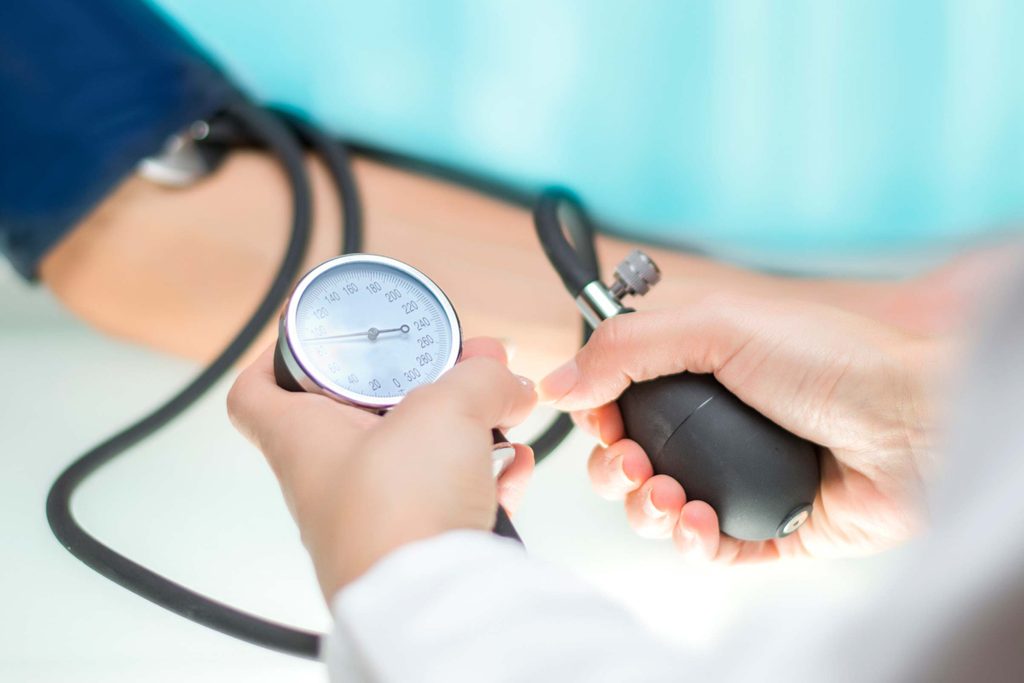Do You Have White Coat Hypertension? Why It Matters
Updated: May 06, 2021
Some people get higher blood pressure readings when they go to the doctor. Is this normal?

Few people truly enjoy going to the doctor, but some get so freaked out at the thought—and then actually being there—that their blood pressure spikes. This is called white coat hypertension, or white coat syndrome. It’s when your blood pressure reaches stage 1 hypertension-level readings (140/90 mmHg or higher) at the doctor’s office, but is normal at home.
There is no definite cause of white coat syndrome, but anxiety and stress over going to the doctor does play a role. Raymond Townsend, MD, a professor of medicine at the University of Pennsylvania and director of its hypertension program, says anywhere from one in 10 to one in 20 people have the condition.
White coat hypertension isn’t what you think
However, Dr. Townsend says that high blood pressure readings at a clinic may not be white coat hypertension at all; they’re just faulty readings. To get the most accurate blood pressure levels, you should sit for five minutes with your back supported and feet touching the floor—even before someone slips on the cuff. This allows your blood pressure to return to its baseline. If the medical professional taking your levels tries to get the job done right away, don’t be afraid to ask for a full five minutes to rest.
Taking necessary precautions is also important for proper readings. Avoid caffeine and cigarettes for at least 30 minutes before a trip to the clinic, as both can spike your blood pressure. Also make sure you go to the bathroom beforehand. A full bladder can raise your systolic blood pressure 10-15mmHg.
Sometimes, high readings are the result of mechanical error. Those blood pressure kiosks you see at pharmacies may have cuffs that are too small for your arm. If that’s the case, the cuff will overinflate and make your blood pressure seem higher than it actually is. If you’re taking your blood pressure at home, make sure you use an FDA validated monitor (more info on that here) and, in the words of Dr. Townsend, “read the dang directions!” You can always bring your home monitor to your doctor to compare readings, too.
The ups and downs of white coat hypertension
So what if you took all the steps to get an accurate blood pressure reading, and it’s still high at the doctor’s office and normal at home? You have white coat hypertension. While there’s no way to “cure” it—studies have shown sedatives don’t even seem to help—the overall risk of white coat hypertension alone affecting your heart, brain, or kidneys is pretty small.
Here’s the catch: Your white coat hypertension could actually be hypertension. It all depends on the numbers. If the difference between your clinic reading and home reading is significant (say, 30 points), then you’re likely not hypertensive. But if your home levels are only slightly lower than those at the clinic, you may need to be put on medication. In the long run, high blood pressure can lead to a sicker heart, damage to the kidneys (especially in African-Americans and Hispanics), and a higher risk of stroke. Making changes to your diet (say, by eating these foods that can lower blood pressure) and lifestyle could help to reduce these risks.
The good news? There is a treatment being used in Canada called automated office blood pressure (AOBP) that could solve white coat hypertension by mimicking home readings. It uses a machine that measures a patient’s blood pressure automatically after he or she has been sitting for five minutes. Plus, no doctors or nurses need to be present, making the environment less stressful. Results have shown that AOBP measurements are 7 to 10 points lower than when blood pressure is measured with the standard clinic method (aneroid cuff or a different automated device). While AOBP isn’t standard in U.S. clinics yet (the machines are expensive), Dr. Townsend believes this method could catch on in the coming years.